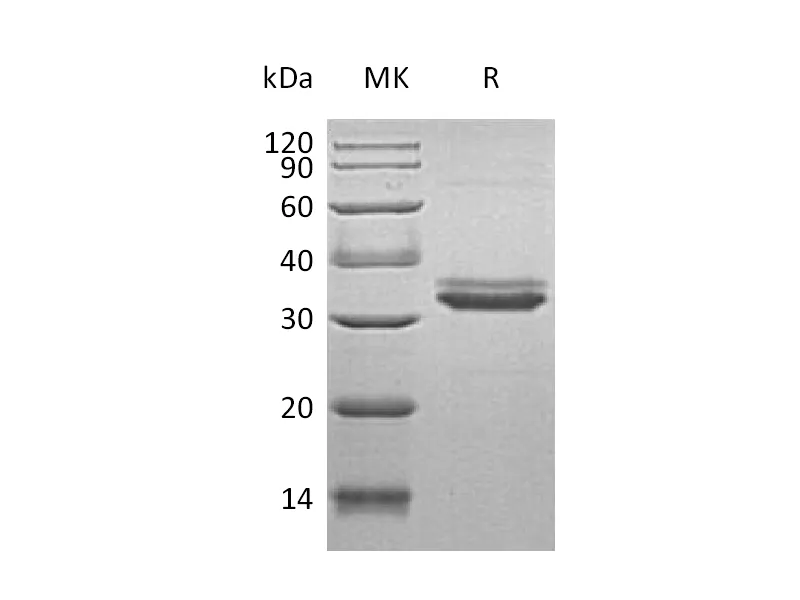
Size1:10μg price1:$136
Size2:50μg price2:$378
Size3:500μg price3:$1890
| Name | Recombinant Human IGFBP-4 (C-6His) |
| Purity | Greater than 95% as determined by reducing SDS-PAGE |
| Endotoxin level | <1 EU/µg as determined by LAL test. |
| Construction | Recombinant Human Insulin-Like Growth Factor-Binding Protein 4 is produced by our Mammalian expression system and the target gene encoding Asp22-Glu258 is expressed with a 6His tag at the C-terminus. |
| Accession # | P22692 |
| Host | Human Cells |
| Species | Human |
| Predicted Molecular Mass | 27.01 KDa |
| Buffer | Lyophilized from a 0.2 μm filtered solution of 20mM PB, 150mM NaCl, pH 7.2. |
| Form | Lyophilized |
| Shipping | The product is shipped at ambient temperature.Upon receipt, store it immediately at the temperature listed below. |
| Stability&Storage | Lyophilized protein should be stored at ≤ -20°C, stable for one year after receipt. Reconstituted protein solution can be stored at 2-8°C for 2-7 days. Aliquots of reconstituted samples are stable at ≤ -20°C for 3 months. |
| Reconstitution | Always centrifuge tubes before opening.Do not mix by vortex or pipetting.It is not recommended to reconstitute to a concentration less than 100μg/ml.Dissolve the lyophilized protein in distilled water.Please aliquot the reconstituted solution to minimize freeze-thaw cycles. |
Alternative Names
Insulin-Like Growth Factor-Binding Protein 4; IBP-4; IGF-Binding Protein 4; IGFBP-4; IGFBP4; IBP4
Background
Insulin-like growth factor binding protein 4 (IGFBP-4) is a 24 kDa protein that binds insulin-like growth factor 1 (IGF-1) and IGF-2 with high affinity and inhibits IGF action in vitro. All members of the IGFBP family can bind IGF-I and IGF-II with about equal affinity, but IGFBP-4 binds IGF2 more than IGF1. It contains IGFBP N-terminal domain and thyroglobulin type-1 domain. IGFBP-4 is induced by forskolin and N6, O2’dibutyryl sdenosine 3’, or 5’-cyclic monophosphate. The IGF-binding proteins can prolong the half-life of the IGFs and have been shown to either inhibit or stimulate the growth promoting effects of the IGFs on cell culture. They alter the interaction of IGFs with their cell surface receptors.
Note
For Research Use Only , Not for Diagnostic Use.
